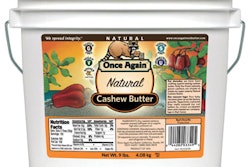But it takes risk and a willingness to push outside category norms and status quo. Sadly, however, few brands take design innovation seriously. Too many spend an exorbitant amount of time and money being evolutionary when revolutionary is what’s called for.
Nowhere is this more true than where millennials are concerned. CPG companies are by and large adept enough when it comes to engaging millennials on social media. But few have examined how their packaging design speaks to this demographic. It’s not enough to simply have a brand presence. Brands must be humanized by their packaging design. Brand owners should strive for a look that is relevant to millennials, a look with personality that shines through and says “This is the brand of the future.”
The humanization of packaging design can manifest itself on any level. Typography, imagery, shape, scale, structure—all play a role in this regard. Handcrafted elements such as cut paper, typography that is balanced in scale with the layout, illustration styles that have a hand-rendered style, line-art, or woodcut style are among the ways in which packaging design can feel genuine and relevant.
In this world of humanized design, it’s ok to be less sophisticated, perhaps even a bit untidy. It’s ok for the primary display panel not to scream the brand name or have lots of bells and whistles in terms of design techniques. That’s not to say it’s all about simplicity and nothing else counts. Rather, it’s about being real.
Whether it’s millennials or others, the point is that package design works better when it’s humanized. For examples look at Beech-Nut’s 100% natural baby food in custom glass jars. Designed by Bluedog Design, this approach lets the fresh product recipes speak for themselves. The typography and the glass jar itself have a clean, natural simplicity and a human scale, so that the fresh and homemade product shines through with personality.
Or how about Vlasic Farmer’s Garden brand pickles in what looks like a mason jar? Look at the deckled label, where the edges are feathered as opposed to cut cleanly. Once again, simplicity rules, and the package design lets the contents be the focal point of the entire execution.
Other examples include Campbell’s Skillet Sauces, where a chalkboard design made popular by restaurant menu boards brings across the personality of the brand. Or look at Doritos Jacked, which comes across as a simple foil bag with a computer-generated label slapped on.
By bringing a humanized approach to package design that interacts and engages consumers, you bring a trust factor into the picture that consumers respond to. Remember, leveraging social media is fine. But it’s not enough for a brand to have its own Pinterest page. It must also have an authentic story to tell and a visually compelling way to tell it.
Marianne R. Klimchuk is ([email protected]) is Associate Chairperson, Associate Professor, Packaging Design Dept., Fashion Institute of Technology.


























